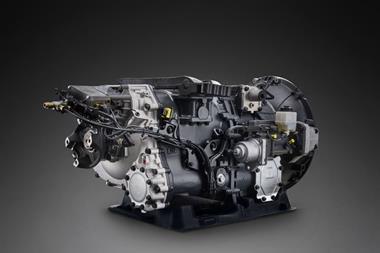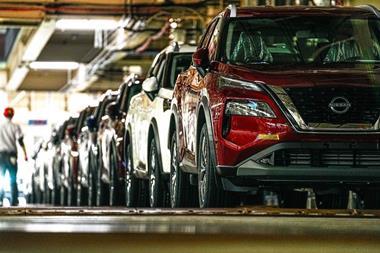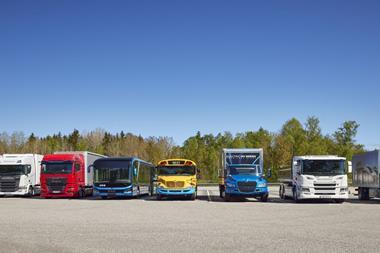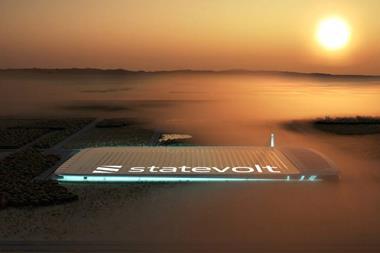Demand for clean air and higher passenger numbers are driving growth in the bus and coach sector
Global bus and coach manufacturing is in a growth cycle, driven by economic growth in the BRIC nations. In countries such as China and India, car-ownership is low, so demand for public transport is high. Comparatively low volumes and the number of model variants needed to satisfy differing operational needs, mean manufacturing efficiencies rely on joint ventures, partnerships and modular products.
National and local governments play a key role in purchasing decisions and influence the market through legislation, for example, on emissions controls and safety standards. The market includes school buses, minibuses, city service buses, articulated buses and luxury coaches. In the school bus sector, the market in China is predicted to grow to between 840,000 and 1.4 million school buses nationwide – that’s massive sales potential for bus and coach manufacturers, in a sector where demand in mature markets is typically in the tens of thousands.

Western European chassis manufacturers have around 10% of total world registrations, but dominate global chassis production. The past two years has seen a series of takeovers and JVs, particularly in China, India and Russia, as these manufacturers seek to secure a role in growth markets. There are also some globally-focussed coach bodybuilders – Brazil’s MarcoPolo and Spain’s Irizar, for example. MarcoPolo, already a partner for Mercedes-Benz, now has a JV with Russia’s Kamaz and India’s Tata Motors.
The need to respond to local conditions and demands means manufacturers have to be ultra-flexible. Manufacturing is focussed on modular chassis platforms produced in volumes at regional plants, which are then finished by local bodybuilding partners. Coach and bus bodybuilding is labour-intensive with limited scope for automation, so using local labour also helps keeps costs down.
There are two main types of bus and coach designs: chassis-plus-body; and integral designs, where the body contributes to the structural integrity of the bus or coach.
Chassis-plus body designs dominate the market as they are easier and cheaper to build than integral buses, and they are better able to cope with poor road conditions. Regional manufacturing plants supply chassis in CKD or SKD form for assembly by local partners and bodybuilders. The advantage for importing customers is that assembly in their own country creates jobs, and the local bus industry participates in the value-creation chain. Daimler Bus (the world’s largest bus manufacturer) says the markets for buses built on conventional ladder-type chassis with front and rear-mounted engines are primarily in central and South America, Africa, plus South and Southeast Asia.
 Scania’s strategy in the citybus sector is to deliver chassis from its European or South American production plants to overseas markets for bodybuilding by local parties – city buses delivered to Southeast Asian markets are built by its Malaysian partner Gemilang.
Scania’s strategy in the citybus sector is to deliver chassis from its European or South American production plants to overseas markets for bodybuilding by local parties – city buses delivered to Southeast Asian markets are built by its Malaysian partner Gemilang.
CKDs and SKD also attract lower import tariffs than complete vehicles in countries such as India. The sales potential in the Indian market means the western European manufacturers now have manufacturing facilities there, competing with indigenous manufacturers Ashok-Leyland and Tata.
CKD – the right building blocks
CKD chassis are comparable to highly sophisticated Lego sets, says Christian Stichert head of Chassis Product Management at MAN Truck & Bus. “Assembly groups, requiring a lot of experience or expensive speciality tools for completion, are already pre-assembled at our plant in Salzgitter, which enables us to guarantee a high quality standard in the final product,” he claims. Before delivery, the individual components are carefully packed to make them available in an optimised sequence for the assembly line at their destination. “This minimises the risk of assembly errors at the point of arrival,” says Stichert. Chassis reassembly takes up to 150 working hours, but then the body has to be fitted to the completed chassis.
“Because of their robustness and the low price, frontengine chassis are primarily in demand in developing and threshold countries where road conditions are poor,” explains Stichert. “Front-engine solutions are especially popular in African countries, in India and in South America. At the same time, a premium segment is also developing in threshold countries. On coach chassis, rear-engines are popular.”
The Daimler bus plant at Samano in Northern Spain is a typical example of how the modularisation approach allows economies of scale with customisation for different markets. All plants work to the same manufacturing standards and systems, and while this ensures global quality standards, it also allows plants to share workloads, providing capability to handle shorter lead times than some of their competitors.
 The Samano plant produces modular buggy or slate chassis for European and other markets. There are five modules: driver’s area, front axle, the frame area between the axles, rear axle and the drive unit comprising the engine, transmission, radiator and ventilation. Engines can be vertically or horizontally installed and there is a choice of transmissions. By using different size fuel tanks, configuring engines to regional emission standards, varying axle arrangements and the driver’s area, Daimler can tailor the vehicle to different local and operating conditions.
The Samano plant produces modular buggy or slate chassis for European and other markets. There are five modules: driver’s area, front axle, the frame area between the axles, rear axle and the drive unit comprising the engine, transmission, radiator and ventilation. Engines can be vertically or horizontally installed and there is a choice of transmissions. By using different size fuel tanks, configuring engines to regional emission standards, varying axle arrangements and the driver’s area, Daimler can tailor the vehicle to different local and operating conditions.
In South America, there is a similar approach, with production centred on Brazil and Mexico. The Sao Bernado plant in Brazil produces over 10,000 chassis a year, with capacity to expand to 25,000. It manufactures chassis for the local market and also CKD units for export to India, where Mercedes-Benz has a JV with bodybuilder Sutlej, and to South Africa and Indonesia.
The biggest technology driver over the past two years in bus and coach manufacturing has been demand for alternative energy sources. Bus and coach manufacturers are global leaders in development of hybrid vehicle technology, from gas-powered buses to biogas, fuel cell and hydrogen technology. Globally, national and local governments are committed to cleaner air strategies in their cities and are committing money to research and offering attractive incentives to encourage adoption of alternative power, from CNG for citybuses to hybrid dieselelectric power on inter-state routes.
While many of these are still at the project/trial phase, CNG-powered buses with their characteristic roof-mounted gas tanks are now produced in such numbers as to be considered mainstream manufacture – Volvo Buses began commercial production of hybrid buses in 2010 in its Polish and Swedish plants, for example.
In some cities, such as Delhi, gas-powered city buses are a legal requirement. In China, government incentives are encouraging the manufacture of hybrid and electric buses, with the Zonda group developing a manufacturing facility dedicated to the development of alternative powertrains.
“Scania is modularising our hybrid components in the same way as for other components,” says Thomas Karlsson, senior vice-president. “The production of gas engines is currently concentrated to Sweden. When it comes to emission standards, Euro 3 to Euro 5 engines are produced both in Europe and in South America, while the production of the Euro 6 engines is concentrated in Europe (due to logistical reasons, since there are no demand for Euro 6 engines outside Europe).”


































